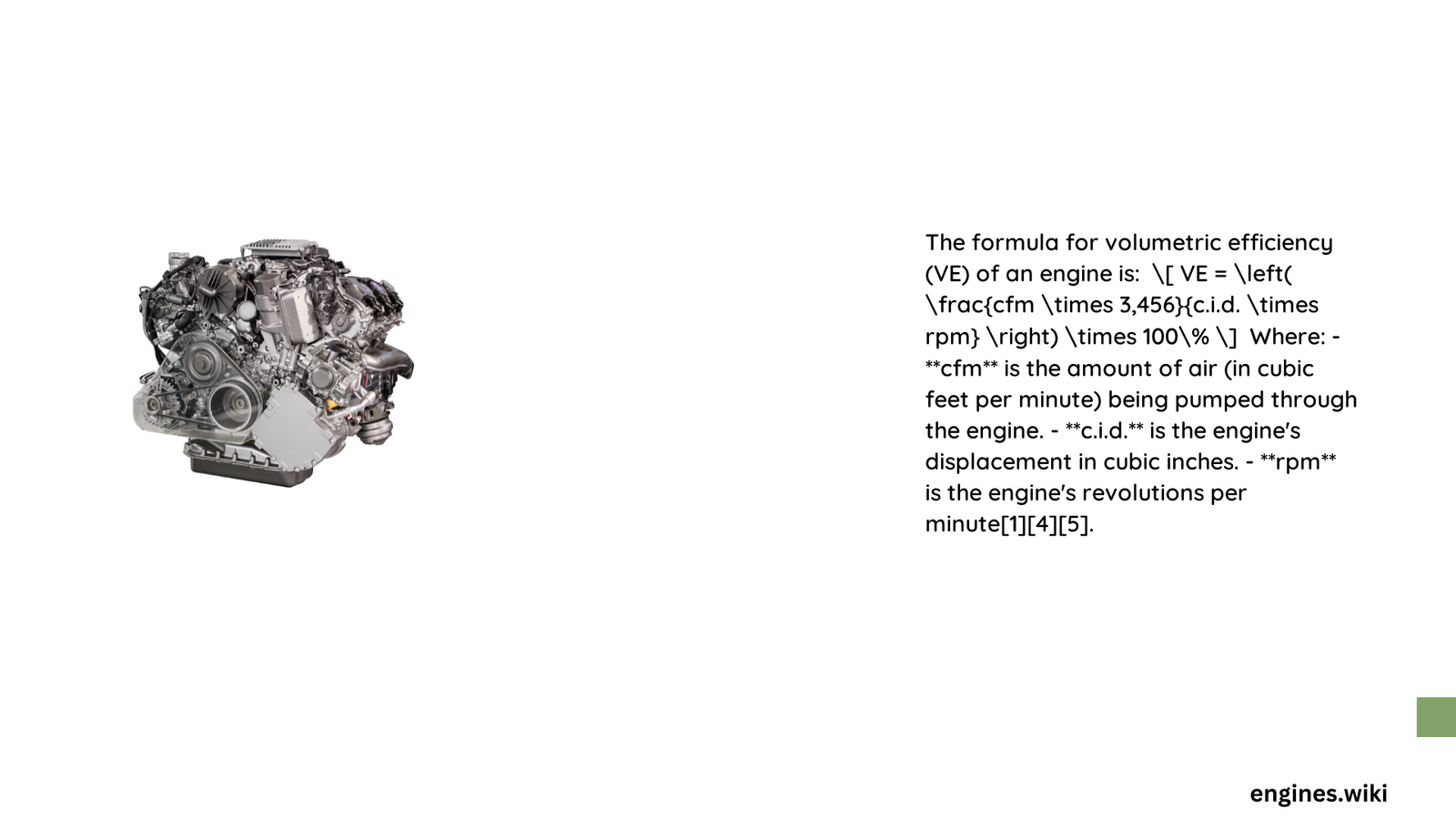Volumetric efficiency represents a critical metric in engine performance, quantifying the engine’s ability to fill its cylinders with air relative to theoretical maximum capacity. Engineers and automotive enthusiasts utilize sophisticated formulas to calculate this parameter, which directly impacts an engine’s power output, fuel efficiency, and overall mechanical performance. Understanding the volumetric efficiency of an engine formula provides insights into how effectively an internal combustion engine breathes and converts air-fuel mixture into mechanical energy.
What Is Volumetric Efficiency?
Volumetric efficiency (VE) measures the actual volume of air an engine draws into its cylinders compared to the theoretical maximum volume. This critical performance indicator helps engineers and mechanics understand an engine’s respiratory capabilities.
Key Formulas for Volumetric Efficiency
Formula 1: Air Mass Flow Rate Method
[ \eta_v = \frac{m_{af} \cdot n_r}{\rho_a \cdot V_d \cdot N_e} ]
Variables Explained:
– ( m_{af} ): Air mass flow rate (kg/s)
– ( n_r ): Crankshaft rotations per complete cycle
– ( \rho_a ): Air density (kg/m³)
– ( V_d ): Displaced engine volume (m³)
– ( N_e ): Engine speed (revolutions/second)
Formula 2: Cubic Feet Per Minute Method
[ VE = \frac{CFM \times 3456}{CID \times RPM} ]
Variables Explained:
– ( CFM ): Air volume (cubic feet/minute)
– ( CID ): Engine displacement (cubic inches)
– ( RPM ): Engine rotational speed
How Do Factors Affect Volumetric Efficiency?

Performance Influencing Elements
| Factor | Impact on VE | Potential Improvement |
|---|---|---|
| Intake Manifold Design | Direct Correlation | 10-15% Efficiency Increase |
| Camshaft Timing | Valve Operation Optimization | 5-10% Performance Boost |
| Air Temperature | Density Dependent | 3-4% Per 10°C Decrease |
| Altitude | Inverse Relationship | Decreases with Elevation |
Critical Calculation Steps
- Determine Air Density
- Use formula: [ \rho_a = \frac{P_a}{R_a \cdot T_a} ]
-
Requires precise pressure and temperature measurements
-
Measure Air Mass Flow
- Utilize mass airflow sensors
-
Capture real-time air intake data
-
Calculate Engine Parameters
- Measure displacement
- Determine rotational speed
- Convert units accurately
What Are Typical Volumetric Efficiency Ranges?
- Naturally Aspirated Engines: 85-90% VE
- Modified Performance Engines: Up to 100% VE
- Forced Induction Systems: 135-165% VE
Why Volumetric Efficiency Matters
Volumetric efficiency directly correlates with:
– Engine power output
– Fuel consumption efficiency
– Overall mechanical performance
– Potential for performance modifications
Advanced Considerations
- Forced induction significantly increases VE
- Precision engineering can optimize air intake
- Modern technologies continuously improve respiratory efficiency
Practical Applications
- Racing engine development
- Automotive performance tuning
- Industrial engine design
- Aerospace propulsion systems
Conclusion
Mastering the volumetric efficiency of an engine formula requires comprehensive understanding of thermodynamics, fluid mechanics, and precise measurement techniques. Engineers leverage these calculations to push the boundaries of internal combustion engine performance.
